Rabbit Health Information
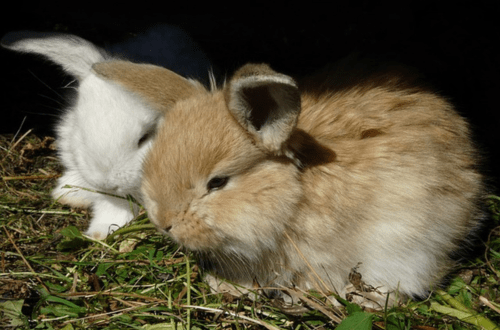
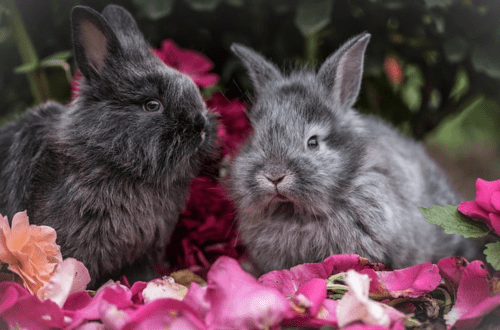

Introduction
By providing a well-rounded and attentive approach to your rabbit’s care, you can greatly increase their chances of living a long and healthy life. Remember that rabbits require commitment, effort, resources, and proper care throughout their entire lifespan which can be between 8-12 years, or longer. We are always happy to see you and your rabbit to give you personalised advice.

General Care
Housing – Rabbits need spacious, safe, and dry housing with adequate ventilation. Hutches should be well-insulated and raised off the ground to prevent dampness. A secure outdoor run is essential for exercise. Keep your rabbits’ living area clean and dry to prevent the buildup of bacteria and parasites.
Exercise and Enrichment – Rabbits need regular exercise to maintain their physical and mental health. Allow supervised playtime outside their enclosure or create a secure indoor play area. Spend quality time with your rabbit daily, engaging in gentle handling, petting and socialisation.
Grooming – Some rabbit breeds require regular grooming to prevent matting and hairballs. Check their fur and nails regularly, and groom as needed. You will need brushes, nail clippers and other grooming tools for coat maintenance.
Temperature and Environment – Keep rabbits in a stable environment, avoiding extreme temperatures. Provide shelter from harsh weather conditions, including harsh sunlight.
Health Monitoring – Conduct regular health checks for signs of illness or injury. Bring them indoors during extreme weather or if they show signs of distress.
Stress Reduction – Minimise stresses like loud noises, sudden movements, and changes in their environment.
Nutrition and Toxic Foods
A balanced diet is crucial. Feed rabbits high-quality hay (timothy, meadow, or orchard grass) as the main part of their diet, as this provides fibre for digestion and dental health, along with fresh vegetables like kale, broccoli, and carrots. Pellets designed for rabbits can be given in moderation (approximately 1 eggcup full). Fresh water should always be available. Make sure that water and food containers are cleaned regularly. If you use a water bottle, check it regularly to make sure it is working correctly.
Some plants and foods are toxic for rabbits. Avoid plants like avocado, rhubarb, and tomato leaves. Starchy foods like potatoes and beans should also be avoided. Sugary treats and fruits (apples and bananas are a favourite with rabbits) should be limited to prevent obesity and dental issues.
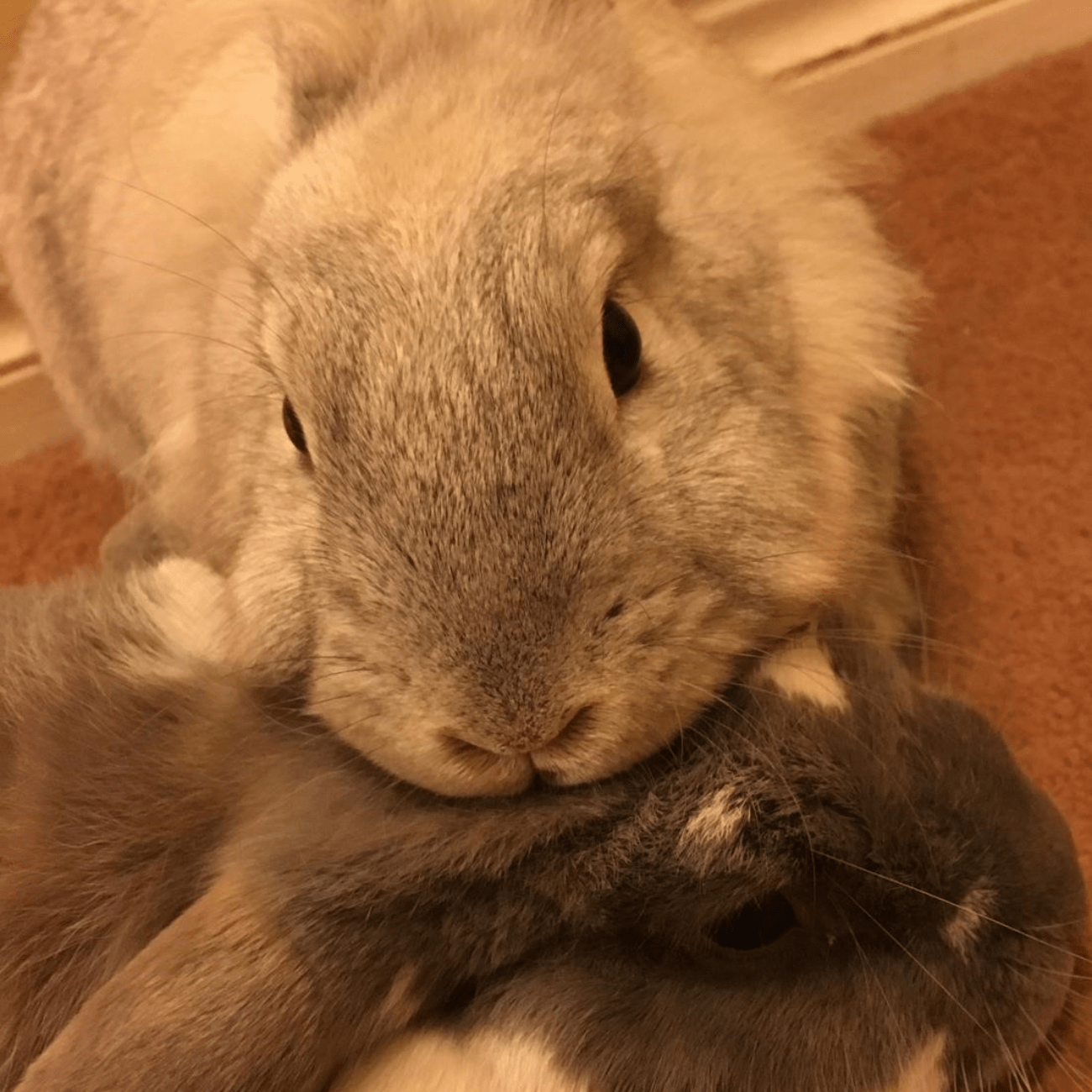
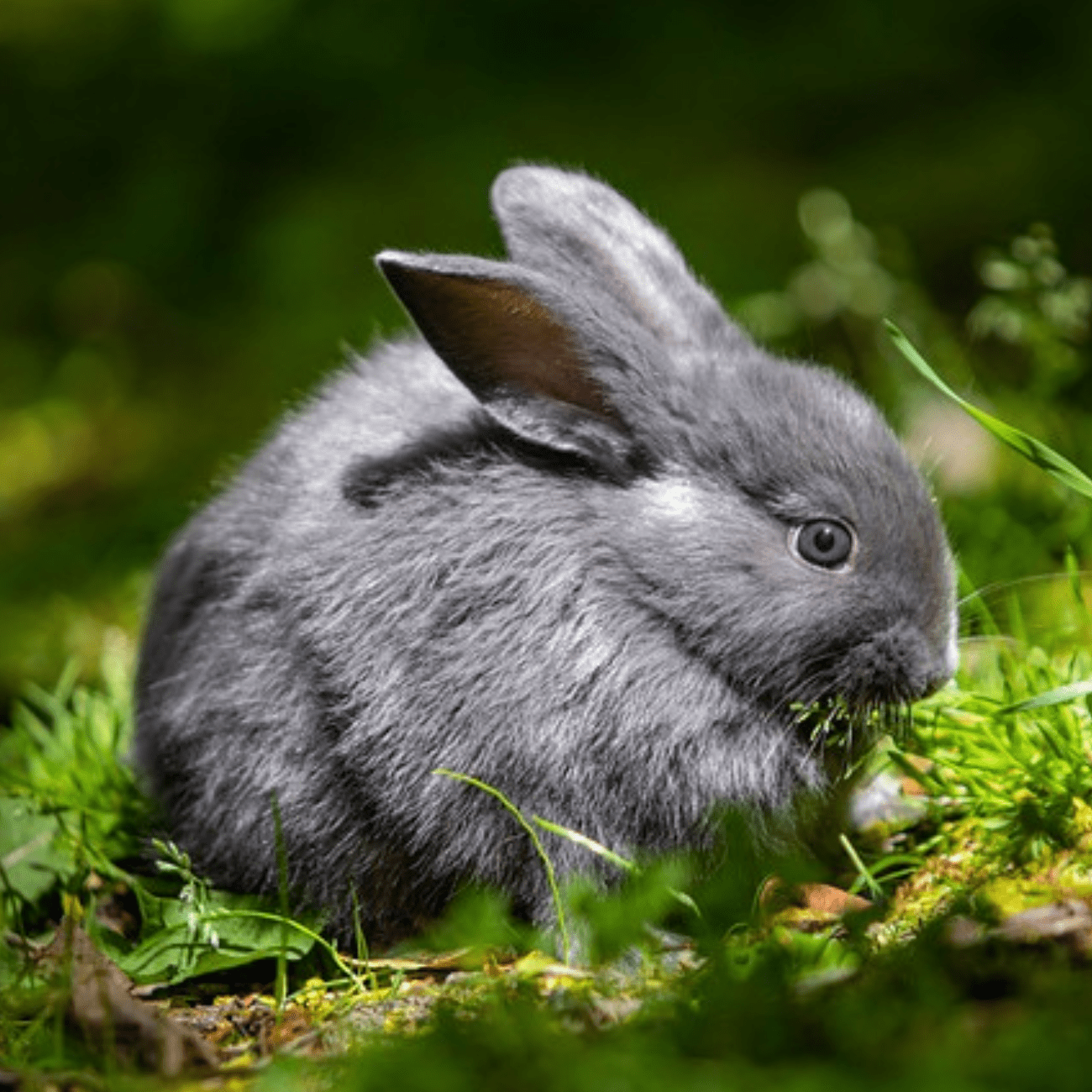
Neutering and Spaying
Neutering (Male Rabbits) Neutering, also known as castration, involves removing the testicles. Neutered males are often calmer, less aggressive, and less likely to mark territory with urine. It can also prevent testicular cancer and reduce the risk of certain behavioural issues.
Spaying (Female Rabbits) Spaying involves removing the ovaries and sometimes the uterus. Spayed females are less likely to develop reproductive cancers, such as uterine or ovarian cancer which sadly are common in rabbits. It also eliminates the risk of pregnancy and false pregnancies, which can be common in intact females.
Aftercare After the surgery, provide a quiet and clean environment for your rabbit to recover. Follow your vet’s instructions for pain management, feeding and monitoring.
Vaccinations
Rabbits should be vaccinated against two main diseases: Myxomatosis and Rabbit Haemorrhagic Disease (RHD). These vaccinations are done annually.
Choosing a Rabbit
Rabbits are social animals and thrive on companionship. Consider keeping them in pairs to prevent loneliness. Decide between having a young rabbit or rehoming an older rabbit. Youngsters require more attention and care.
Indoor Rabbits
Provide a spacious indoor enclosure, such as a rabbit cage or playpen. Ensure the floor is lined with rabbit-proof bedding like hay or fleece. Offer toys, tunnels, and hiding spots for mental stimulation. Cardboard boxes, untreated wood, and safe soft chews are great options.
Many rabbits can be litter trained. It is important to use a litter that is suitable for rabbits to use. The types of litter to choose are:
- • Paper-based pelleted litter – These are typically made of recycled paper that is compressed into absorptive pellets. These paper-based pellets absorb rabbit urine, Most brands also do a decent job at odour control.
- • Compressed sawdust pelleted litter – This is leftover sawdust that has been compressed into absorptive pellets. This type of litter also does a good job of containing odours.
- • Shredded paper – The cheapest option you can find is simple shredded paper. You can make this yourself if you have a shredder. While it’s safe to use it doesn’t absorb rabbit urine easily.
While there are many types of litter that are safe to use around rabbits, there are also a lot of common brands of litter that you should avoid. Rabbits will often eat some of their litter, so we can’t use any type that can cause digestive problems in rabbits. You also want to avoid litters made of poisonous wood or particles that can cause respiratory problems after prolonged exposure. These include:
- • Clay litter – This litter clumps up when it’s exposed to moisture to make it easier to clean a cat’s litter box. However, since rabbits often eat their litter, it can clump up in a rabbit’s stomach and cause a blockage.
- • Pine or cedar wood shavings – Pine and cedar shavings used to be a common type of litter and bedding used for rabbits. However there have been some studies that suggest exposure to the phenols in these woods can cause liver damage in rabbits.
- • Materials with a high amount of dust – A high amount of dust can cause irritation in a rabbit’s respiratory system, so it’s best to avoid these types of litter.
- • Scented litters – Scented litters don’t always use chemicals that are safe for rabbits. Rabbits also have sensitive noses, so being next to a strong scent all day long can cause respiratory irritation over time.
Keep your rabbit away from toxic plants, household chemicals, electrical cords (these can be protected by using a hosepipe that has been cut open and placed over the cord) and other household hazards.
Rabbit Haemorrhagic Disease (RHD)
A highly contagious and often fatal viral infection, which attacks the rabbit’s internal organs causing them to haemorrhage. This is a very life threatening condition that can take hold quickly.
Myxomatosis
A viral disease spread by insects, often mosquitos, causing severe illness and often death.
Gastrointestinal Stasis
Slowed digestion due to diet issues or stress. If your rabbit stops eating it is imperative that you see your vet as soon as possible.
Dental Problems
Overgrown teeth can lead to pain and difficulty eating. Ensure your rabbits teeth are wearing down naturally by offering appropriate chew toys and a high fibre diet.
Respiratory Infections
Rabbits are prone to respiratory issues in damp and cold environments. Also exacerbated by stress and poor and overcrowded housing with bad ventilation.
Flystrike
Flystrike is also called ‘myiasis’. It happens when flies lay their eggs on your rabbit, and those eggs hatch out into maggots. They can eat into your rabbit’s flesh within 24 hours which can cause death in a very short time.
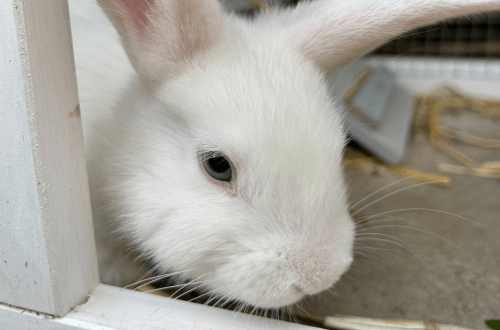
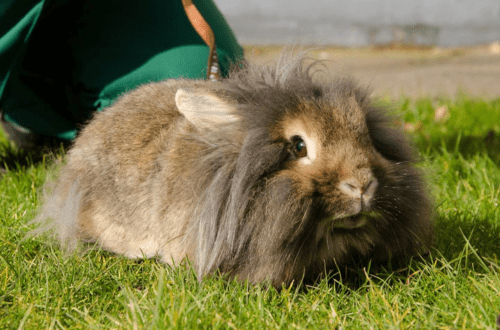
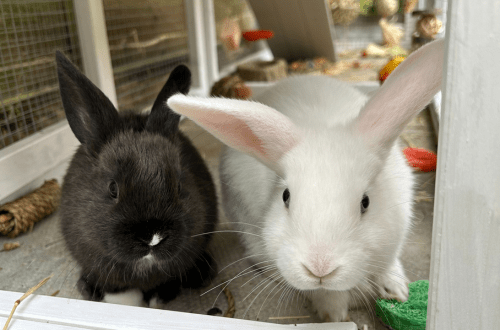
Prevention is better than cure.
Check your rabbit’s bottom every day, more than once a day in the summer. If there is any urine or faeces, clean and dry the area. Keep the rabbits’ environment clean so that flies are not attracted. Remove dirty litter and bedding. Apply Rearguard or a similar product as recommended by your vet if your rabbit is at risk of flystrike. If your rabbit is obese, it needs to lose weight so that there is less strain on joints, it can squat properly when toileting and it is able to clean itself properly. If your rabbit has a wound, keep it clean and dry. If you suspect your rabbit has a urinary problem, then take it to the vet for diagnosis and treatment. If your rabbit is producing unusually wet faeces, take it to the vet for diagnosis and treatment, and be prepared to change the diet accordingly. If you suspect your rabbit has arthritis, ask the vet for anti-inflammatory medicine to ease pain in joints and ensure it isn’t overweight.
Are my rabbits at risk? All rabbits are at risk from flystrike. You should never be complacent. Certain factors increase the risk:
- • Time of year – Flystrike is especially common during the summer but can occur at any time of the year.
- • Rabbits with a dirty bottom – This usually happens because of poor diet, where faeces or caecotrophs accumulate, or because of painful joint conditions such as arthritis. Any rabbit with a dirty bottom is at very high risk of flystrike. Urine on your rabbit’s fur can also attract flies.
- • Wounds – If your rabbit has an injury flies will be attracted to the smell of blood.
What to do if you find your rabbit has maggots – This is an emergency. Do not delay. You need to get your rabbit to a vet immediately. Its life is in danger, and it is in severe pain because it is being eaten alive. Firstly, keep calm, but phone your veterinary practice immediately. Flystrike is a true emergency – day or night – and treatment cannot wait. So long as it does not delay your trip to the vet, pick off any maggots you can see with tweezers. Do not dunk the rabbit in water. Fur in the affected area may need to be shaved and wet fur clogs the clipper. Flystrike is a very serious condition and sadly it’s often fatal. However, rabbits can make a full recovery if the condition is found and treated quickly. Flyblown rabbits are usually in pain and severe shock, and they need skilled veterinary and nursing care.
What else do I need to know? Rabbits are particularly susceptible to Flystrike if they are unable to keep themselves clean of urine and faeces. Urinary infection or bladder stones/sludge can cause urine dribbling, soaking the fur with urine and attracting flies. Obesity can make it impossible for a rabbit to clean urine or faeces from its fur and so can arthritis, which is made even more problematic by obesity. In addition, obesity can make it very difficult for a rabbit to squat properly when it toilets and the fur can become soiled. Painful dental problems can make a rabbit reluctant or unable to clean itself properly and can also result in a soiled bottom. Another problem is unsanitary living conditions. Soiled bedding and litter must be removed regularly, preferably daily. Left in the rabbit’s home, it too will attract flies, and will itself soil fur.
Sticky bottom syndrome – This occurs when the fur around the rabbit’s bottom becomes caked with soft droppings (caecotrophs) that the rabbit would usually take direct from its bottom and eat. It is therefore generally caused by an incorrect diet. A diet that is too high in protein and too low in fibre results in the rabbit producing an excess of soft droppings. The problem is also seen in overweight rabbits who find it difficult to reach their bottoms and in rabbits with teeth problems which are affecting their eating pattern. Sticky bottom leaves rabbits at a higher risk of flystrike, a potentially fatal disease where flies lay eggs in the caked fur around the rabbit’s bottom.
